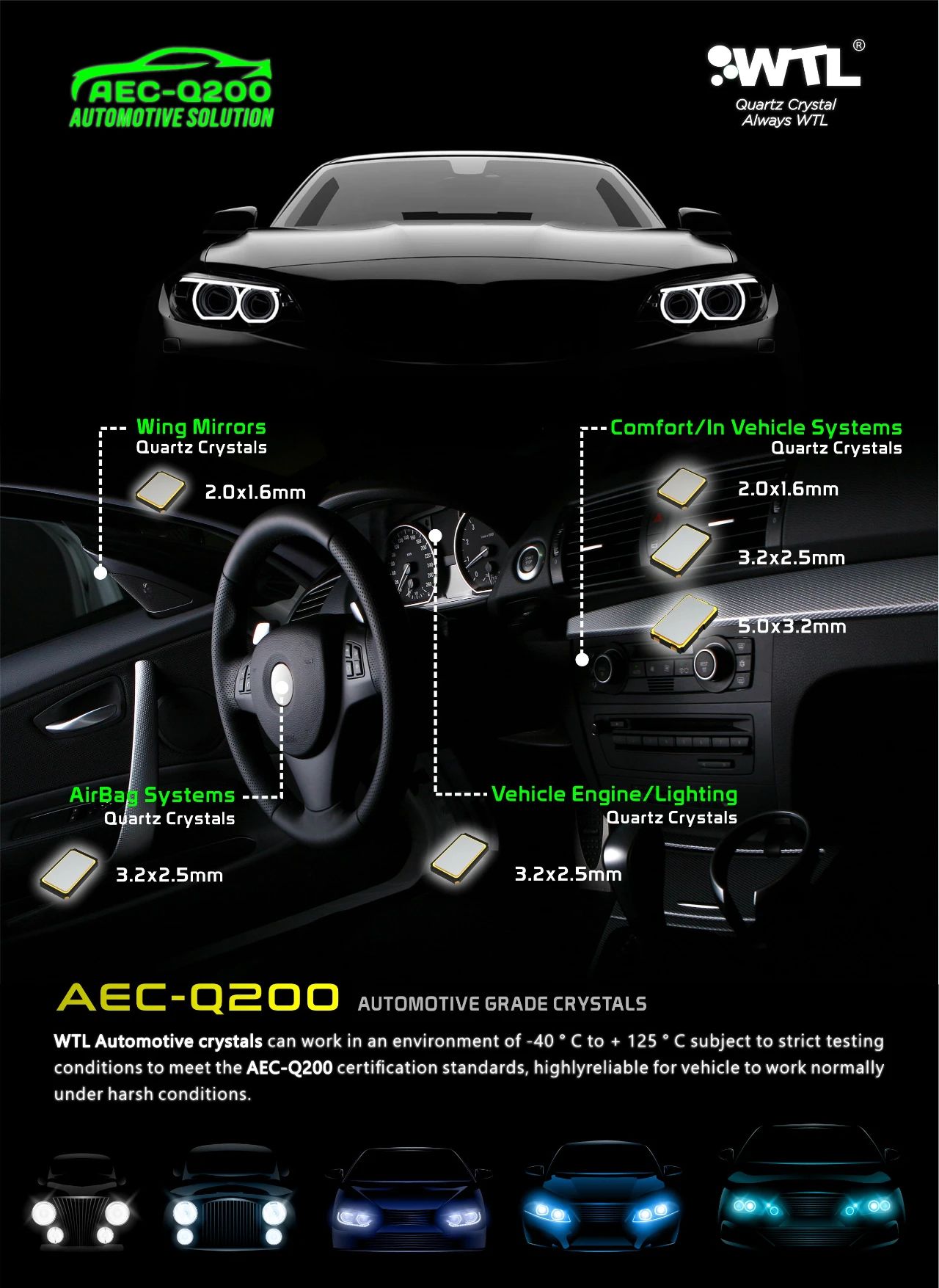
With the rapid development of technology, people's daily transportation has changed from bicycles to motorcycles, and then to cars. However, as we all know about cars, how much do we know about the electronic components and onboard crystal oscillators in cars? Next, the editor will tell you what a car mounted crystal oscillator is? What are the commonly used car mounted crystal oscillators?

What is a car mounted crystal oscillator?
Car mounted crystal oscillators can be referred to as automotive standard crystal oscillators, automotive crystal oscillators, etc. It refers to a commonly used term for frequency components such as crystal oscillators, crystal resonators, sensors, gyroscopes, etc. that comply with the AEC-Q200 technical standard and are used in applications such as car navigation equipment, safety equipment, ADAS (Autonomous Driving Assistance System), etc. in automobiles or onboard devices.
Car mounted devices have high standards for application crystal oscillators:
1. The working temperature range is wide from minus 40 to 125 degrees Celsius, and it can also be suitable for environments up to 150 degrees Celsius;
2. Able to have stable start-up characteristics under extremely harsh environmental conditions;
3. It has excellent characteristics such as strong heat resistance, vibration resistance, and impact resistance;
4. High quality requirements such as zero defects.
5. Complies with AEC-Q200 standards;
6. It has characteristics such as high stability, low power supply voltage, and low power consumption.
7. A high-quality crystal oscillator with good impact resistance can ensure the high-quality crystal oscillator of the circuit.
Crystal oscillators are used in all four onboard systems
Car clock system: time display, timer, instrument panel, remote door lock, remote key, car air conditioning, automatic window control, automatic headlights, car anti-theft system, etc.
Safety control system: engine control, wire controlled steering system, transmission, airbags, anti lock braking system, tire pressure detection system, electric power assist system, etc.
Data information system: safety line control system, car audio, vehicle navigation system, data bus system, video monitoring system, reverse radar, etc.
Intelligent transportation systems: real-time data systems for road traffic, intelligent transportation systems, automatic intelligent toll collection systems, license plate automatic recognition systems, highway intelligent systems, etc.

Here are a few commonly used crystal oscillator models and frequencies for car mounted devices
Car mounted camera: SMD2016 packaged crystal oscillator, rated at 24MHz.
Car audio: SMD2520/SMD2016 package crystal oscillator with 12.288MHz, 12MHz, 24MHz, 62.4M and smaller package SMD1612.
Vehicle mounted GPS navigator: SMD3225 packaged crystal oscillator, temperature compensated crystal oscillator (TCXO).
Car mounted reverse radar: The 16MHz, 26MHz, 32MHz, and 40MHz of SMD3225 packaged crystal oscillators are commonly used in radar.
Car air conditioning: cylindrical 3 * 8 series 32.768k, 4MHz crystal oscillator
Car Bluetooth: SMD2016 Bluetooth crystal oscillator, 16~54MHz.
Car Bluetooth and WIFI: SMD3225 26MHz or SMD3225 16MHz, with a recommended precision of at least ± 10PPM chip mounted crystal oscillator. Ensure normal online and data transmission without disconnection.
Car mounted time display device: SMT crystal oscillator 32.768KHz, such as FC-135 or MC-146, with an accuracy of ± 10PPM~± 20PPM.
High end driving recorder: It uses an active crystal oscillator, such as the OSC3225 27MHz 3.3V ± 10PPM active crystal oscillator responsible for display functions. It is necessary to mention that the driving recorder used crystal oscillators, which used to be cylindrical series. However, due to stability considerations, the vast majority of solutions on the market have now been changed to SMD3225 27MHz, SMD3225 24MHz, SMD3225 26MHz, FC-135 32.768KHz, or MC-146 32.768KHz. The main function of the crystal oscillator 32.768KHz is to display time, so it is widely used, such as instruments, speedometers, electronic road meters, battery management units, car radios, video and audio players, etc.

Finally, we will add a vehicle grade crystal oscillator, which mainly involves wide temperature crystal oscillators. The crystal oscillator needs to have normal operating performance within the working temperature range of -40~+85 ℃ or -40~105 ℃. It needs to be explained here that not all crystal oscillators on cars are strictly required to be of the vehicle standard level. Electronic devices such as car audio systems and driving recorders do not have strict requirements for the operating temperature range of crystal oscillators.

